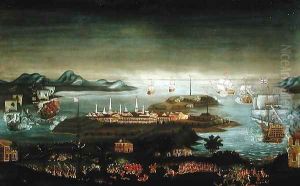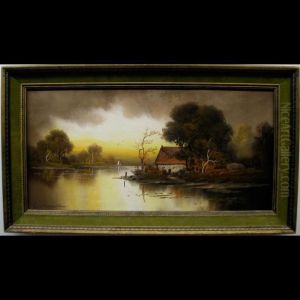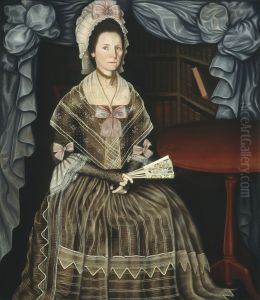Winthrop Chandler Paintings
Winthrop Chandler was an American painter, primarily known for his work as a portraitist and decorator in the late 18th century. Born on April 6, 1747, in Woodstock, Connecticut, Chandler emerged from a background not typically associated with artists of his era. Unlike many of his contemporaries who sought formal training in Europe or apprenticed with established painters, Chandler was largely self-taught, his artistic skills honed through personal study and practice. This lack of formal training did not hinder his development; instead, it contributed to his unique style, which blended elements of folk art with the more refined techniques of his time.
Chandler's work spanned several genres, including portraiture, landscapes, and ornamental decorations, but he is best remembered for his portraits. These works are celebrated for their detailed depiction of subjects, often highlighting the social status or personal achievements of his sitters through carefully chosen props and backgrounds. His portraits are also noted for their vibrant colors and intricate detailing, which added depth and realism to his depictions.
In addition to his portraiture, Chandler was skilled in decorative arts, creating ornate wall murals and furniture decorations that were highly sought after by the wealthy patrons of New England. This aspect of his work showcases his versatility and creativity, as he was able to adapt his artistic skills to a variety of mediums and surfaces, further establishing his reputation during his lifetime.
Despite his talents and contributions to early American art, Winthrop Chandler remains a somewhat obscure figure in art history, overshadowed by his contemporaries who had the advantage of European training or more widespread recognition. However, his work provides invaluable insights into the social and cultural landscape of Colonial America, offering a window into the lives and environments of his subjects.
Winthrop Chandler's career was relatively short-lived; he died on July 29, 1790, in Woodstock, Connecticut. Yet, in his 43 years, he managed to leave a lasting legacy that continues to be appreciated by art historians and collectors alike. His paintings are preserved in several museums and historic collections, serving as a testament to his skill and importance as an early American artist.











